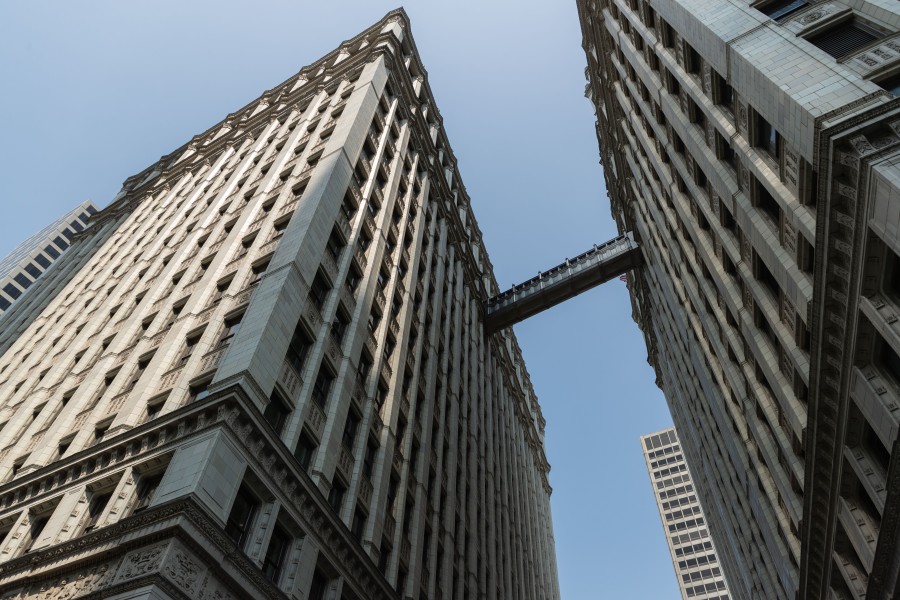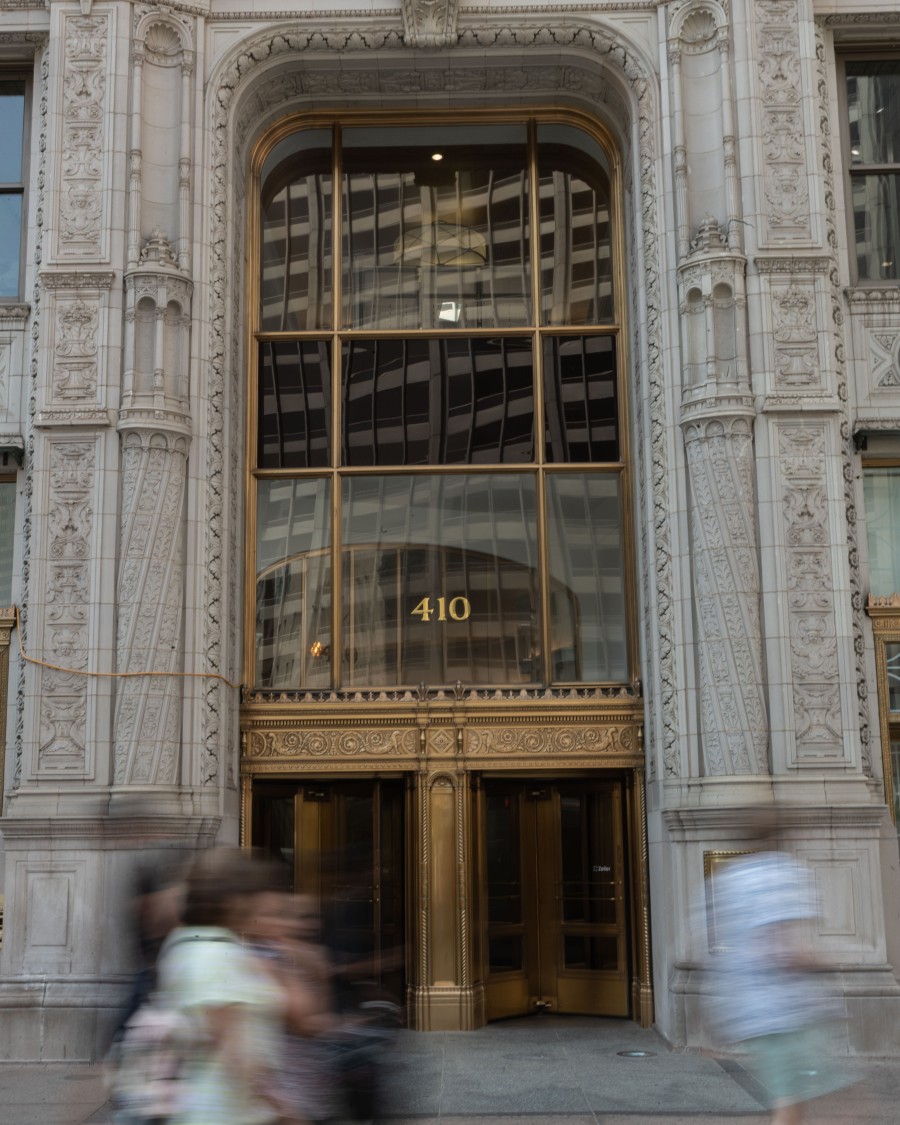What’s That Building? Chicago Icons: Wrigley Building
At 398 feet tall, the structure stands on the north bank of the Chicago River, gleaming white.


What’s That Building? Chicago Icons: Wrigley Building
At 398 feet tall, the structure stands on the north bank of the Chicago River, gleaming white.
By Dennis RodkinEditor’s note: This is the first in a series of “What’s That Building?” stories this summer that will focus on Chicago’s most iconic buildings.
In the early 1920s, tourists in New York could marvel over the biggest electric sign in the world flashing the names of Wrigley Spearmint, Doublemint and Juicyfruit gum.
Here in Chicago, Wrigley advertised its presence with a beautiful, creamy white tower whose crown was modeled on a 16th-century cathedral bell tower in Spain.
The two were icons of William Wrigley Jr.’s far-reaching chewing gum (and baseball) empire, but only one of the two has lasted a century. In New York, Wrigley dismantled its 250-foot-long sign in 1942 to save electricity during World War II.
In Chicago, the Wrigley Building, 398 feet tall, still stands on the north bank of the Chicago River, gleaming white and bathed in electric light at night.
The building is timelessly beautiful and a feature on architecture boat tours and tourists’ social media posts.

Designed by Charles Beersman at the illustrious Chicago architecture firm Graham, Anderson, Probst & White, the Wrigley Building has two parts: the south tower completed in 1921 and the north in 1924.
Wrigley was the first to build a tower in the early years after a bridge connecting Michigan Avenue with Pine Street in 1918 opened what we now know as North Michigan Avenue to redevelopment for the 20th century.
The Wrigley Building was soon joined by two more architectural fantasies on the other side of the street: the gothic Tribune Tower in 1923 and the Medinah Athletic Club — now the Hotel Intercontinental — in 1929. That cluster of three fanciful highrises is a great place to see how architects tried to use historical references in tall buildings before slick, simplified modernism took over.
Originally, the two Wrigley Building towers were separated by North Water Street, which is one reason you see a skybridge connecting them at the 14th floor. In 1957, plans were announced to cover the street with an esplanade for pedestrians. This was going to give both the Wrigley Building restaurant and the National Boulevard Bank more public entrances off Michigan Avenue.

The esplanade from Michigan Avenue to Rush Street included an enclosed sidewalk-level walkway between the two towers, which was later opened up to be more of a gateway to the esplanade. Now there is a pedestrian-only space that continues to the monumental pedestrian arcade on the river side of the Trump International Hotel & Plaza.
That change was part of a $91 million rehab in 2013, done by the owners who bought the building from Wrigley in 2011 for $33 million. In 2018 they sold it for $255 million to Joe Mansueto, the billionaire owner of the Morningstar financial research and investment firm and the Chicago Fire soccer club.

Through the century and the ownership changes, all that gleaming white terra cotta has remained (some of it replaced in the recent rehab). Keeping the building sparkling hasn’t been easy — especially in the building’s early years, when Chicago was a far dirtier, sootier city and Wrigley’s closest neighbors were soap and cheese factories.
The soot was so heavy in Chicago in those days that the Wrigley Building was incomplete when the terra cotta was filthy with soot. In March 1921, about a year after construction began, the Chicago Tribune ran a photo showing the difference between the crisp white of a part that had been washed and the dingy gray of the not-yet-washed tower.
“Mr. Wrigley, to make it look like a new building, has to spend a lot of money to have it washed,” the Tribune wrote, thanks to soot that “spreads a gray curtain between the city and the blue spring sky.”
Dennis Rodkin is the residential real estate reporter for Crain’s Chicago Business and Reset’s “What’s That Building?” contributor. Follow him @Dennis_Rodkin.
K’Von Jackson is the freelance photojournalist for Reset’s “What’s That Building?” Follow him @true_chicago.